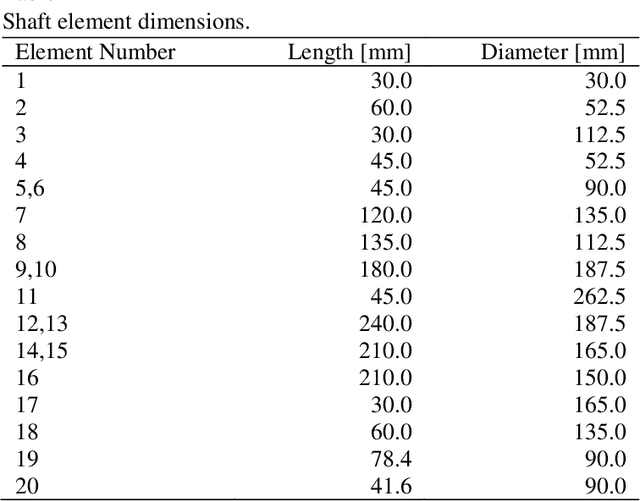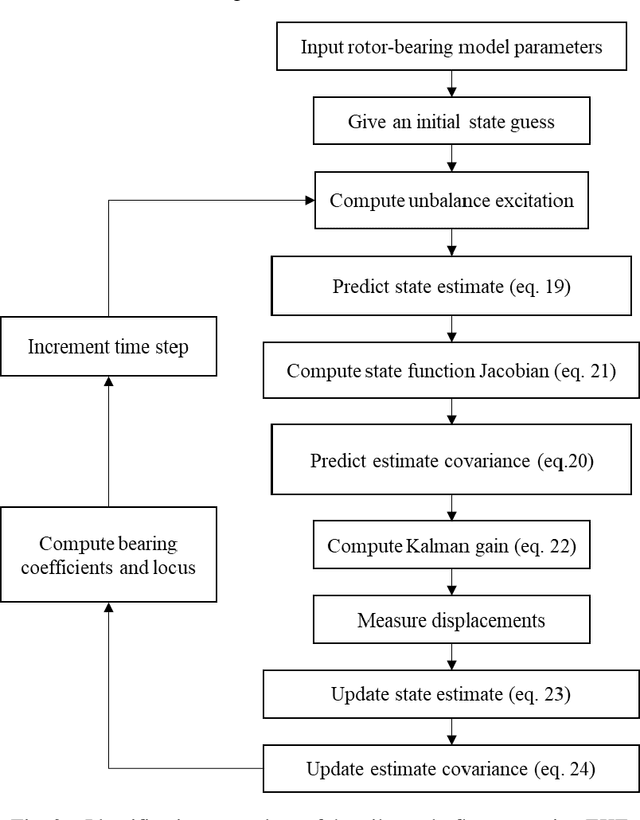Marcus Vinícius Medeiros Oliveira
Identification of oil starvation in hydrodynamic journal bearing using rotor vibration and Extended Kalman Filter
Jul 01, 2021



Abstract:Oil starvation is a critical fault in hydrodynamic bearings caused by insufficient oil supply flowrate. When late detected, this fault can deteriorate the bearings' performance and damage the rotating machine. Thus, early fault identification techniques should be applied to avoid this scenario and allow effective maintenance. However, the literature about the identification of oil starvation fault is relatively recent and very scarce. Among the few studies available, oil starvation has been identified in early stages using a purely deterministic technique, which can be jeopardized by model inaccuracy. Alternatively, this paper proposes a novel method for the identification of oil starvation faults in hydrodynamic bearings using the rotor vibrational responses and the Extended Kalman Filter (EKF), which is a stochastic-determinist state estimator that can deal with modelling and measurement errors. Computational simulations performed in this paper show that the proposed method is suitable to successfully identify the oil starvation faults in real-time even with noisy vibrational responses, thus representing a promising tool for the monitoring of rotating machines.
A model-based technique to identify lubrication condition of hydrodynamic bearings using the rotor vibrational response
May 21, 2021



Abstract:Faults related to hydrodynamic bearing can imply in high maintenance costs when late-detected and even to the total shutdown of the system. Thus, techniques of early fault diagnosis have high relevance to the reliability of rotating machinery. However, a common fault caused by inadequate bearing oil supply has not yet received appropriate attention. This paper presents a new approach to model and identify starved or excessive oil supply in hydrodynamic bearings. The developed identification technique is a model-based process that uses the rotor vibration signal to access the bearing lubrication. Numerical identification tests were performed and the results showed that the proposed method can satisfactorily estimate the oil flow rate in bearings under starved and flooded lubrication conditions, thus representing a useful and promising tool for condition monitoring and fault diagnosis applied to rotating machinery.
 Add to Chrome
Add to Chrome Add to Firefox
Add to Firefox Add to Edge
Add to Edge